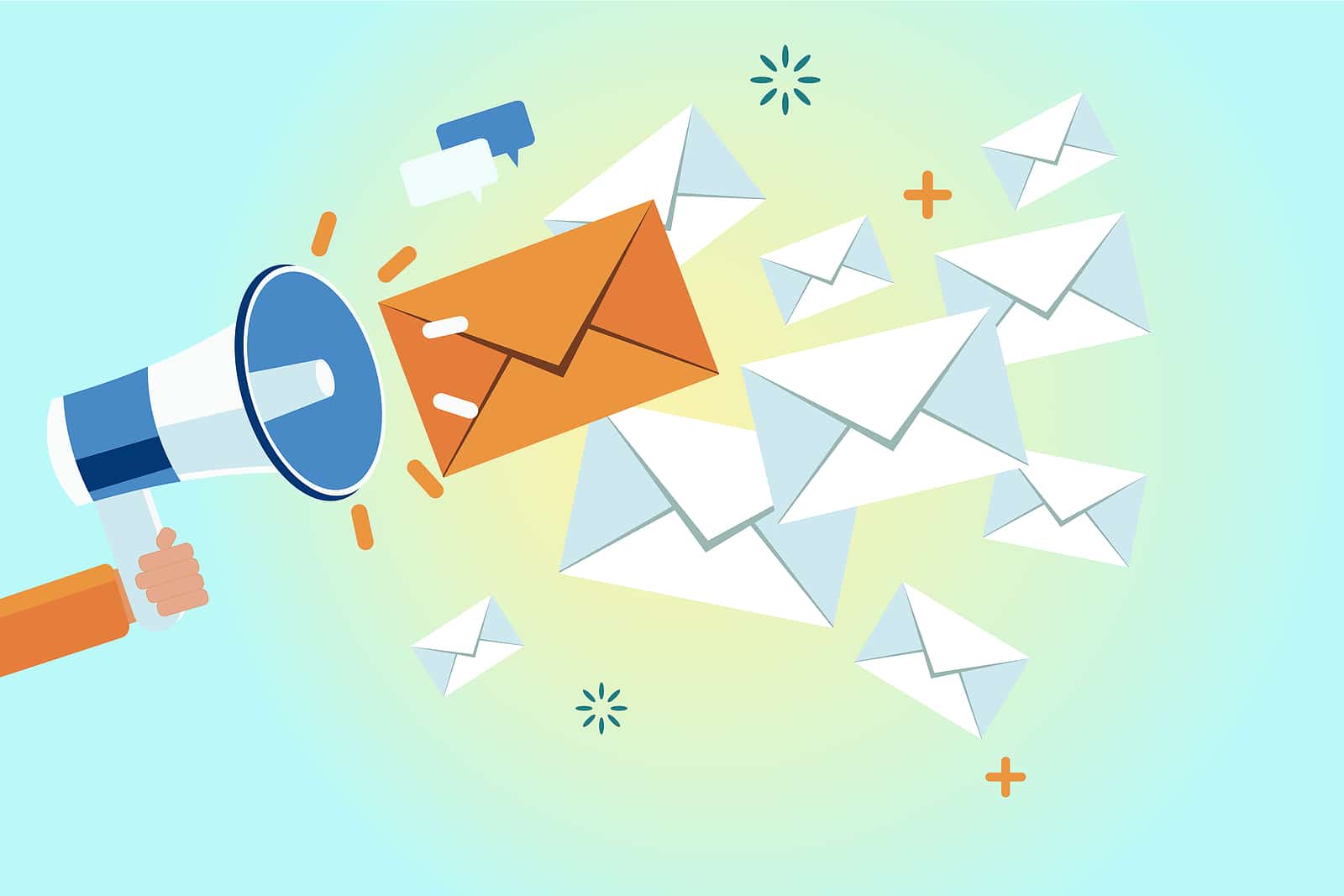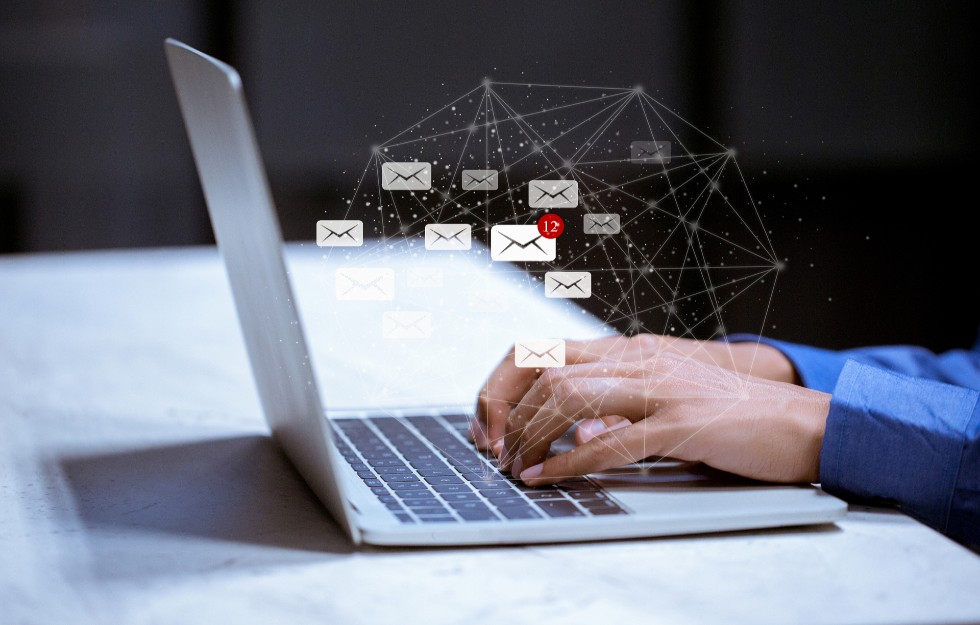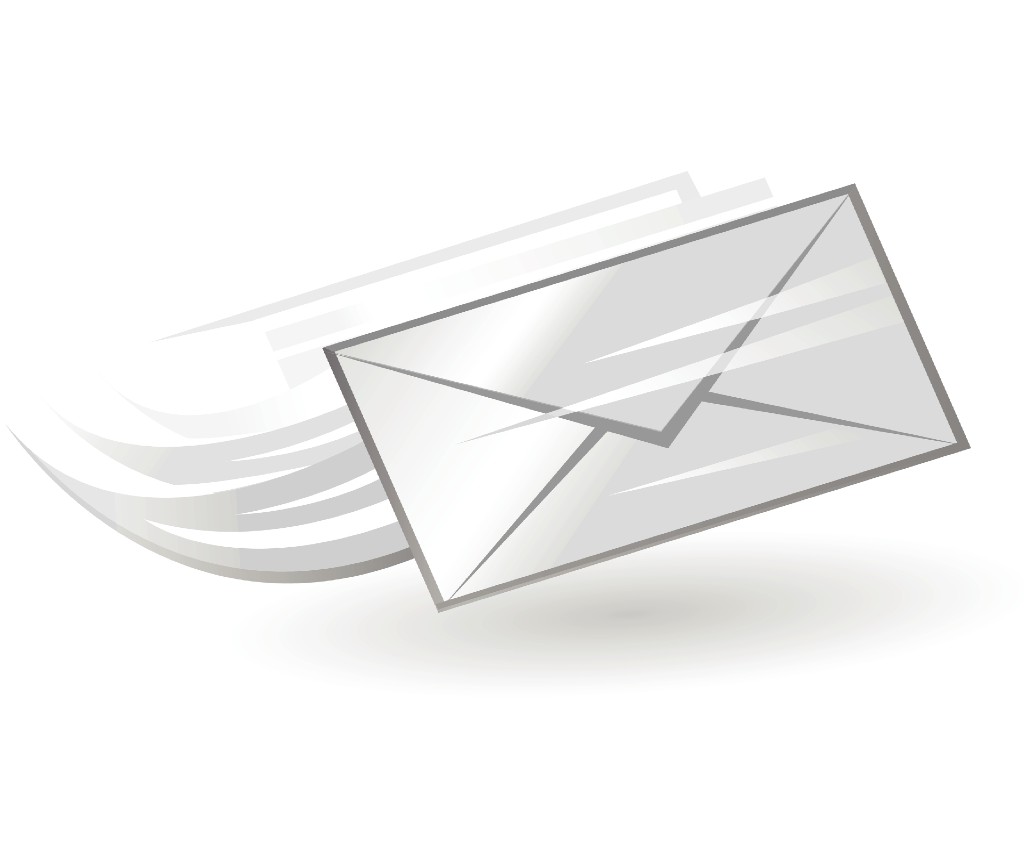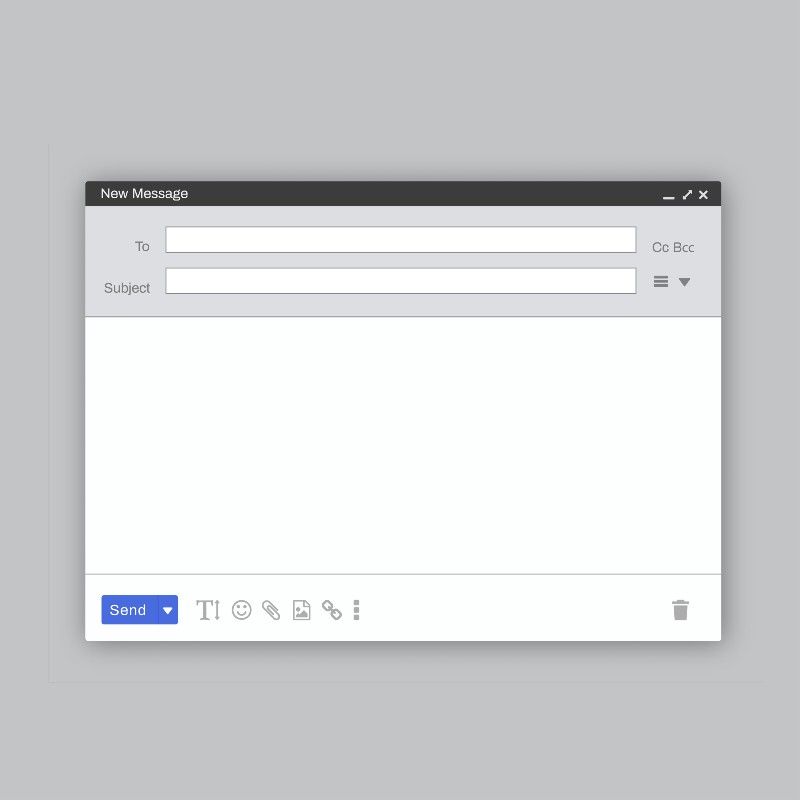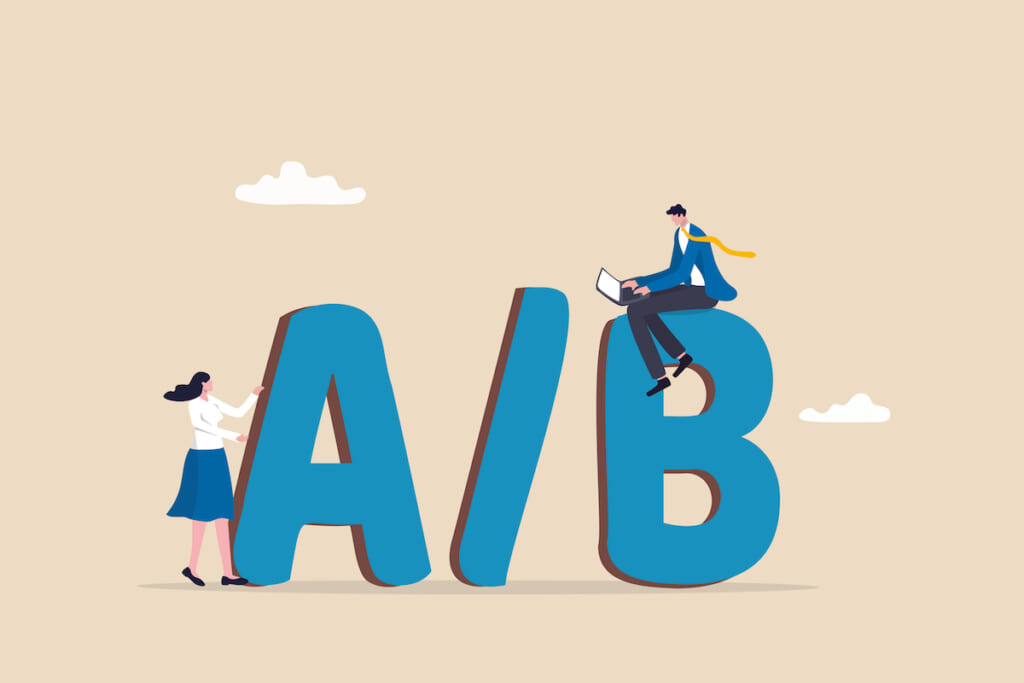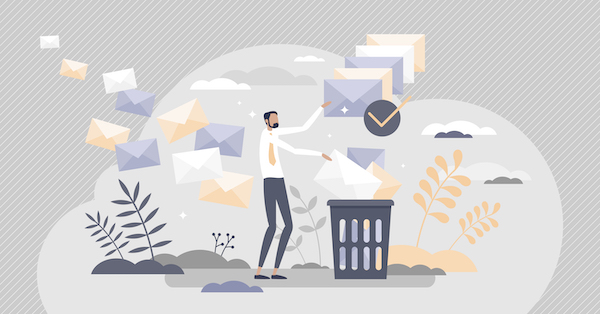10 Powerful Email Marketing Tips for Small Business Owners
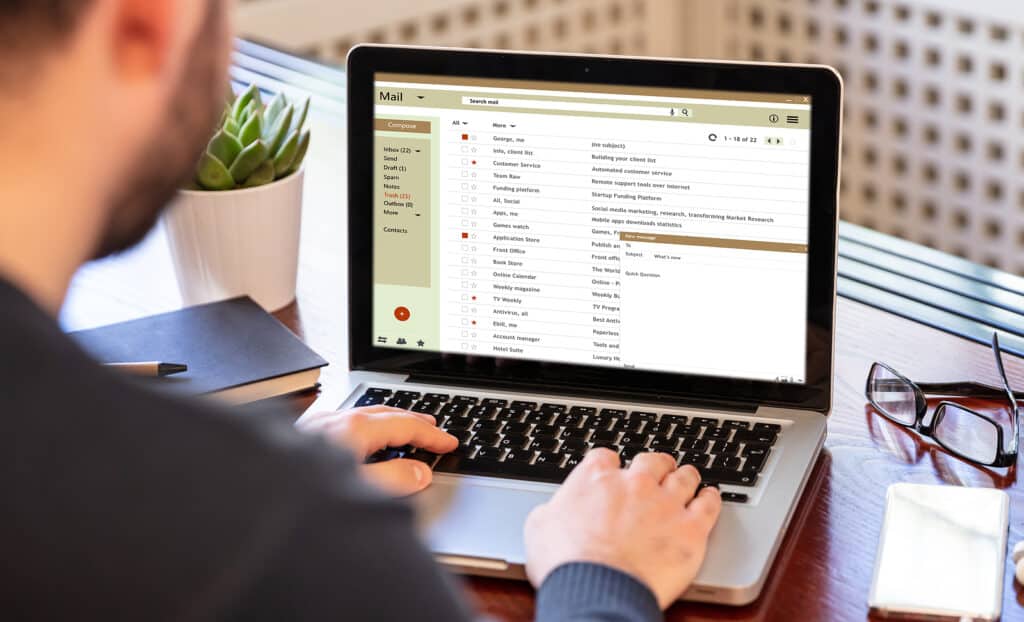
When it comes to small businesses, email marketing can be an absolute game-changer – a cost-effective and impactful tool that can help you reach your target audience, nurture customer relationships, and drive sales. We understand that you may face unique challenges and opportunities in your email marketing efforts. That’s why we’ve put together this guide of 10 powerful email marketing tips specifically designed for you!
1. Build a Quality Email List
Building a strong and engaged email list helps in the success of your email marketing strategy. Here are some tips for cleaning and engaging your list as well as some effective tactics to grow your list organically.
Cleaning and Engaging Your Email List
- Remove Inactive Subscribers: Over time, your email list may accumulate inactive subscribers who no longer engage with your emails. These subscribers can drag down your engagement metrics and affect deliverability. Regularly review your subscriber activity and remove those who haven’t opened or clicked on your emails in a significant period. This ensures that you’re targeting an audience that is genuinely interested in your content.
- Segmentation and Personalization: Segmenting your email list allows you to send targeted and personalized content to specific groups of subscribers. By tailoring your messages to their interests and preferences, you increase the likelihood of engagement and conversion.
- Engagement Tactics: Encourage your subscribers to actively engage with your emails by including interactive elements such as surveys, polls, or quizzes. Ask for feedback, suggestions, or opinions on topics relevant to your business. By fostering two-way communication, you create a sense of involvement and build stronger relationships with your audience.
Growing Your Email List Organically
- Lead Magnets: Offer valuable incentives to entice visitors to join your email list. Create compelling lead magnets such as free e-books, guides, templates, or exclusive discounts. Offers should be aligned with your target audience’s interests and provide genuine value. Promote your lead magnets on your website, blog, social media, and other marketing channels to attract potential subscribers.
- Optimized Signup Forms: Make it easy for visitors to subscribe to your email list by optimizing your signup forms. Keep the form fields simple and concise, asking for only essential information like name and email address. Use persuasive copy and design elements that grab attention and convey the benefits of subscribing.
- Word-of-Mouth Referrals: Encourage your existing subscribers to refer others to join your email list. Offer incentives such as discounts, freebies, or entry into exclusive giveaways for successful referrals. Implement referral programs using dedicated referral links or codes to track and reward referring subscribers.
- Collaborate with Others: Partner with complementary businesses or influencers in your industry to cross-promote each other’s email lists. This tactic allows you to tap into a wider audience and gain exposure to potential subscribers who may be interested in your content.
Growing an engaged email list takes time and effort. Focus on providing value, optimizing your signup process, and nurturing relationships. As your list grows organically, you’ll have a valuable asset for your email marketing campaigns, enabling you to connect with your audience effectively and drive business growth.
2. Segment Your Audience

Segmenting your email list is a powerful strategy that recognizes the diverse needs and preferences of your subscribers. By acknowledging that one size does not fit all, you can deliver personalized and targeted content that resonates with specific groups. Here are some effective segmentation strategies.
Effective Segmentation Strategies
- Demographic Segmentation: Start by segmenting your email list based on demographic information such as age, gender, location, or job title. This allows you to tailor your messaging to specific audience segments that might have different needs.
- Behavioral Segmentation: Analyze your subscribers’ actions and behaviors to create segments based on their engagement patterns. Consider segmenting based on email opens, clicks, website visits, or purchase history. For instance, you can target subscribers who frequently open your emails but haven’t made a purchase with exclusive discount offers to encourage conversion.
- Purchase History Segmentation: Divide your email list into segments based on past purchases or product categories. This allows you to send personalized recommendations, upsells, or cross-sell offers to subscribers who have shown an interest in specific products or have a history of purchasing from you. By understanding their preferences, you can provide relevant product suggestions that drive repeat purchases.
- Lifecycle-Based Segmentation: Segment your email list based on where subscribers are in their customer journey: new subscribers, active customers, lapsed customers, or loyal advocates. Each segment requires a different approach and communication strategy.
- Survey-Based Segmentation: Send out surveys or preference centers to gather more information about your subscribers’ interests and preferences. Use this data to create segments based on their responses. This method allows subscribers to self-identify their needs, helping you deliver highly targeted content that aligns with their stated preferences.
Effective segmentation relies on accurate and up-to-date data. Regularly review and update your segments as subscriber behavior and preferences change over time.
3. Craft Compelling Subject Lines
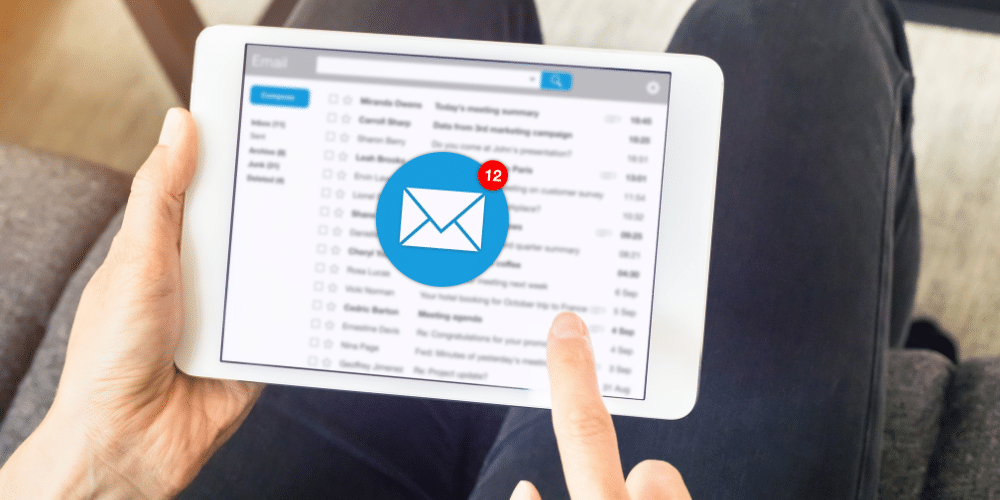
When it comes to email marketing, first impressions matter. Your subject line is the gateway to getting your emails noticed and opened. Here are some email marketing tips to help you craft compelling subject lines that entice recipients to click.
Subject Line Tips
- Convey Value: Let your subscribers know what they can gain by opening your email. Use your subject line to highlight the benefits or solutions your email provides. For example, “Discover 10 Proven Tips for Boosting Your Productivity.”
- Experiment with Humor: Injecting humor into your subject lines can capture attention and make your emails stand out. For instance, “Because we can’t all win the lottery…”
- Create a Sense of Urgency: Use words that convey urgency to prompt recipients to take immediate action. Phrases like “Limited Time Offer” or “Ending Soon” can instill a fear of missing out and encourage opens. For example, “Only 24 Hours Left to Grab Your Exclusive Discount.”
- Personalize: Tailor your subject lines to each recipient by incorporating personalization elements. Include their name or mention something specific to them. This personal touch can make your emails feel more relevant and engaging. For instance, “John, Here’s Your Special Birthday Gift.”
- Ask a Question: Pose an intriguing question in your subject line to spark curiosity and engage recipients. Make sure the question is relevant to your email conten. For example, “Struggling to Sleep? Discover Natural Remedies for a Good Night’s Rest.”
- Keep it Concise: Keep your subject lines short and concise so that it will display fully on different devices and email clients. Aim for around 30-50 characters to grab attention quickly and avoid being cut off.
Test different subject lines to see what resonates best with your audience. Analyze open rates and make adjustments based on the data you gather.
4. Focus on Value-Driven Content

In a world where subscribers are inundated with countless emails every day, it’s important to find ways to stand out from the crowd. One effective strategy is to provide your audience with valuable content they simply can’t resist. Here are some ideas to ensure that every email you send provides something valuable to your subscribers.
Ideas to Add Value with Content
- Educational Articles: Offer your subscribers informative and educational articles that align with their interests and needs. By positioning yourself as a valuable resource, you can establish credibility and build trust with your audience.
- Exclusive Offers: Give your subscribers a sense of exclusivity by offering them special discounts, promotions, or early access to new products or services. Make them feel like valued members of your community by providing them with exclusive benefits not available to the general public.
- Customer Success Stories: Showcase real-life examples of how your product or service has made a positive impact on your customers’ lives or businesses. This social proof can inspire trust and motivate others to engage with your brand.
- Curated Content: Take the time to curate relevant and high-quality content from external sources that your subscribers may find interesting. This could include industry news, thought-provoking articles, or resources that complement your own offerings. By consistently providing curated content, you position yourself as a trusted source of information and save your subscribers valuable time in searching for it themselves.
- Interactive Content: Engage your subscribers by incorporating interactive elements into your emails. This could include quizzes, surveys, polls, or contests that encourage participation and provide a fun and interactive experience. Interactive content not only adds value but also helps foster a sense of community and engagement with your brand.
5. Use Personalization Effectively
Personalization is indeed a powerful tool that adds a touch of magic to your emails. By addressing recipients by their names and using their past purchase history or preferences to personalize content recommendations, you can create stronger connections and make your subscribers feel seen and valued. Here’s how you can leverage personalization in your email marketing strategy.
Adding Personalization to Emails
- Personalize Subject Lines: Include the recipient’s name or reference their past interactions in the subject line to grab attention and make the email feel more personalized. For instance, “John, Your Favorite Products Are Back in Stock!”
- Recommended Products: Use data from previous purchases, browsing history, or customer preferences to suggest relevant products or services in your emails. Showcase items that align with their previous purchases or offer complementary products they might be interested in.
- Leverage Behavioral Triggers: Set up automated emails triggered by specific actions or events, such as abandoned carts, product views, or birthdays. Customize these emails to provide personalized recommendations, exclusive offers, or reminders based on the recipient’s behavior.
- Tailor Content and Offers: Craft email content that speaks directly to the recipient’s needs, pain points, or interests. Provide tailored content, exclusive offers, or relevant tips and advice that resonate with their preferences.
Successful personalization requires collecting accurate data, maintaining an up-to-date customer database, and respecting privacy regulations. Personalization can create a more engaging and relevant email experience that strengthens connections with your subscribers and ultimately drives sales.
6. Optimize for Mobile Devices
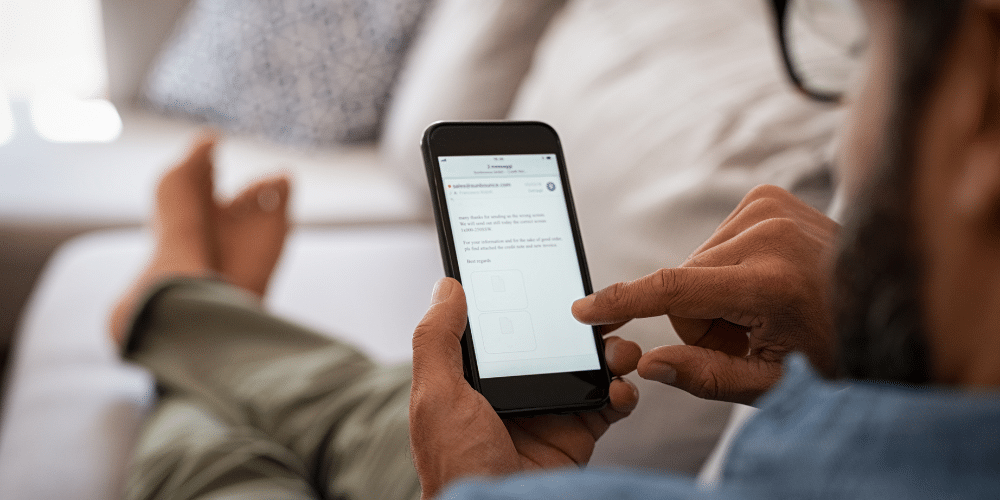
Mobile devices have become an integral part of our lives, and that includes checking emails on the go. Ensure your email designs are responsive and optimized for mobile devices. A seamless experience on smartphones and tablets will keep your audience engaged and prevent them from hitting that dreaded “unsubscribe” button.
7. Test and Refine
Never stop experimenting! A/B testing is a powerful tool that allows you to fine-tune your email marketing strategy. Test different elements like subject lines, content layout, imagery, and call-to-action buttons. Analyze the results and refine your approach based on what works best for your audience.
8. Create a Clear Call to Action (CTA)
When it comes to email marketing, guiding your subscribers towards taking action is essential for achieving your goals. Whether you want them to make a purchase, sign up for an event, or download a resource, creating clear and compelling call-to-actions (CTAs) can make all the difference. Here are some email marketing tips to create effective CTAs that leave no room for confusion and drive action:
Tips for Effective Call-to-Actions
- Clear and Concise Language: Use clear and concise language in your CTAs to convey exactly what you want your subscribers to do. Avoid ambiguity and be specific about the action you want them to take. For example, instead of a generic “Click Here,” use a CTA like “Get Your Free Ebook Now” or “Book Your Spot Today.”
- Contrasting Colors: Make your CTAs stand out by using contrasting colors that grab attention. Choose colors that complement your overall email design but are distinct enough to draw the eye. A color that contrasts with the rest of the email will make the CTA button or text pop and increase the likelihood of it being clicked.
- Persuasive Language: Use persuasive language that creates a sense of urgency or excitement. Phrases like “Limited Time Offer,” “Exclusive Access,” or “Don’t Miss Out” can compel subscribers to take immediate action. Frame your CTA in a way that emphasizes the benefits or value they will receive by clicking or completing the desired action.
- Placement and Size: Position your CTA where it’s easily visible and accessible within the email. Typically, placing it above the fold or at the end of the email where readers naturally reach can be effective. Also, ensure that the size of the CTA is appropriate and clickable on both desktop and mobile devices.
Align your CTAs with the overall goal of your email campaign and the content of the message. By creating compelling CTAs that are clear, visually appealing, and persuasive, you can guide your subscribers towards taking the desired action and maximize the effectiveness of your email marketing efforts.
9. Monitor Analytics and Metrics

Data is your best friend in email marketing. Monitor key metrics such as open rates, click-through rates, and conversion rates to gauge the effectiveness of your campaigns. Analyze the data and use it to refine your email marketing strategy. Make data-driven decisions that lead to better results.
10. Maintain Consistency and Frequency
Consistency and frequency help keep you top-of-mind with your audience. By determining a sending schedule that works for your business and sticking to it, you can maintain regular communication without overwhelming your subscribers. Here’s why consistency and frequency are key and how you can establish an effective sending schedule.
Reasons to Create a Sending Schedule
- Establishing Trust and Expectations: Consistently sending emails to your subscribers builds trust and establishes expectations. When your audience knows they can rely on receiving valuable content from you at a certain frequency, they are more likely to engage with your emails and look forward to hearing from you.
- Maintaining Engagement: Regularly appearing in your subscribers’ inboxes helps keep your brand fresh in their minds. By maintaining a consistent presence, you increase the chances of your emails being opened, read, and acted upon. This regular engagement helps nurture relationships with your audience and keeps them connected to your brand.
- Avoiding Overwhelm: While frequent communication is important, bombarding your subscribers with too many emails can lead to inbox overload and potential unsubscribes. Pay attention to engagement metrics like open rates and click-through rates to gauge whether your frequency is appropriate and adjust if necessary.
- Understanding Your Audience: Consider your target audience’s preferences and behavior when determining your sending schedule. Factors such as their availability, industry norms, and the nature of your content can influence how frequently they want to receive emails from you. You can also survey your subscribers or analyze engagement data to gather insights on their preferences.
Every audience is unique, so it’s important to monitor and adapt your sending schedule based on their response and preferences. By finding the right balance between consistency and frequency, you can maintain engagement, build trust, and keep your brand top-of-mind without overwhelming your subscribers.
Email marketing has the potential to be a game-changer for your business. By following these email marketing tips and adapting them to your unique business needs, you can harness the power of email to engage your audience, build lasting relationships, and drive sales. Or, leave it to the experts at Internet Marketing Geeks. Contact us now to find out how we can help you with your email marketing needs.

